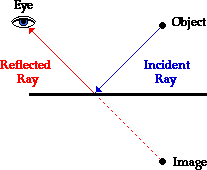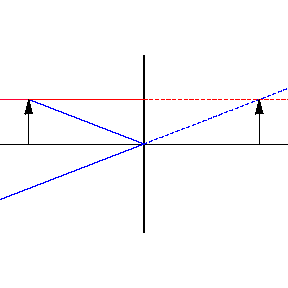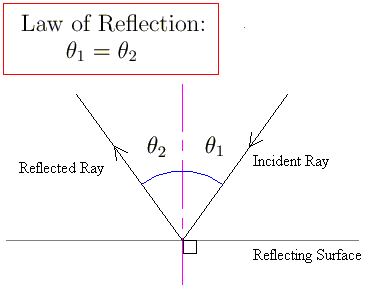11.7 Blog: Images in Plane Mirrors
 Today in our Science Class we went over 11.7, "Images in Plane Mirrors". We learned many new interesting concepts in this class. First we learned how light rays are used to locate images in mirrors. A light source emits millions of rays that bounce of a mirror. You will only see the rays that bounce back into our eye. Light travels in nothing but straight lines. And when your eyes look at a mirror it seems as if the mirror is a light source but it actually is not. Mirrors are opaque. This is how you see things reflected on to a mirror. These things are called Virtual Images. We also can use this knowledge to create equal perpendicular lines and locate an image on a mirror by ourselves. You just draw the incident ray coming from your object and then you draw your reflected ray. You can easily draw the reflected ray using a protractor without a real light source because we know the angle of incidence and the angle of reflection is always equal.
Today in our Science Class we went over 11.7, "Images in Plane Mirrors". We learned many new interesting concepts in this class. First we learned how light rays are used to locate images in mirrors. A light source emits millions of rays that bounce of a mirror. You will only see the rays that bounce back into our eye. Light travels in nothing but straight lines. And when your eyes look at a mirror it seems as if the mirror is a light source but it actually is not. Mirrors are opaque. This is how you see things reflected on to a mirror. These things are called Virtual Images. We also can use this knowledge to create equal perpendicular lines and locate an image on a mirror by ourselves. You just draw the incident ray coming from your object and then you draw your reflected ray. You can easily draw the reflected ray using a protractor without a real light source because we know the angle of incidence and the angle of reflection is always equal.
 After this you trace the reflected ray behind the mirror and you can see where the object would be on a mirror by seeing when the extended reflected rays connect. This is really cool to me as you can draw an exact reflection o
After this you trace the reflected ray behind the mirror and you can see where the object would be on a mirror by seeing when the extended reflected rays connect. This is really cool to me as you can draw an exact reflection of an image by yourself at home just by using a pencil and a protractor! Two observations you can get from this is that the distance between the object and the mirror is the same distance between the virtual image and the mirror. Another thing is that the object-image line is perpendicular to the mirror surface. These are some of the interesting things we learned today about images
in mirrors.
If you need more help understanding and doing this, Watch this interesting video!
Another Important thing we learned in class is how to describe the properties of an image! You can do this by using the acronym called SALT, which stands for:
Size of the image compared to the object
Attitude of the image(orientation)
Location of the image
Type of Image(Real or Virtual)
Overall this was a great class in which we learned many interesting things!
By: U.Q and H.M








